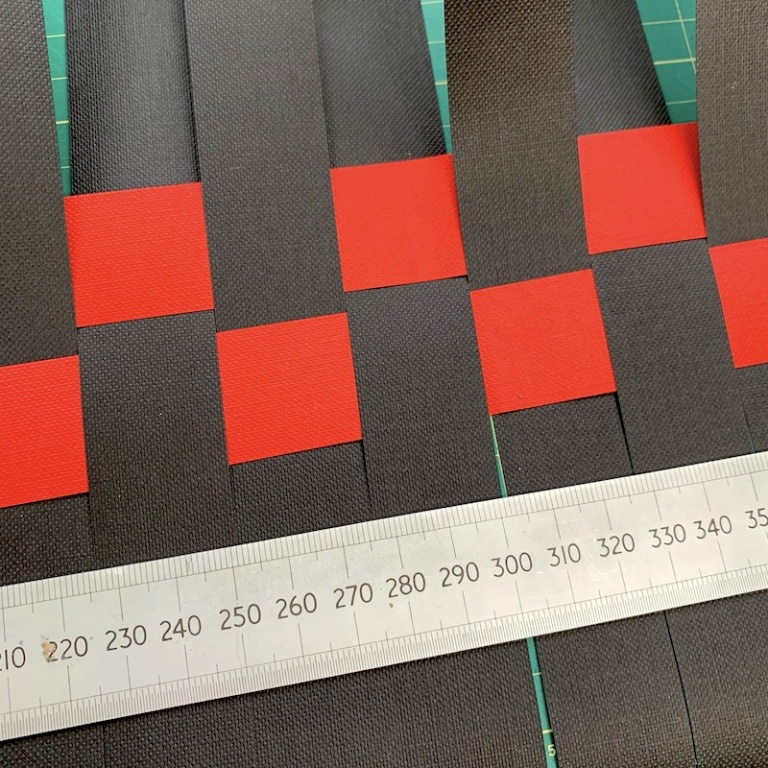Following the weeks after our first group gathering for Forces in Translation, I have been working in my studio on skew cubes. My first woven skew cube was started with the group as one investigation during five days of experimentation, discussion and sharing. It came home unresolved.
The initial investigation had involved working with six paper squares, folded and glued to form a skew cube. What followed was a number of members of the group weaving with a range of different materials, both natural and man made, to experiment with the weaving, rather than construction of a skew cube. I decided to work in paper, a favourite material, with the added twist of using two colours to weave a patterned skew cube.
For a number of reasons I decided to re-weave my original cube, constructing a former to weave around. I usually work small scale and quickly found it quite cumbersome to work with, but decided I should complete it and make some smaller samples afterwards. The big question I was wanting to answer, was…. what happens to the pattern on the top face, when the cube is enclosed?
There had been some discussion about this during our meeting. What would happen, would the checkerboard base be reflected on the opposite face? The pattern that had started to form on the sides, had a reassuring sequence to it. Alternating rectangles 7×3 in both plain and checkerboard.
As I turned the four vertices and started to weave the top face, there were other questions. What was going to happen to the strands? I was using two colours. Would they match up and resolve in an ordered fashion?
On completing the cube I discovered that some of the strands resolved, whilst others conflicted. Why? Could I predict which strands would conflict on cubes with a different skew? Is there a pattern for conflicting strands, or even a rule I could apply to all?
This post was part of my contribution to the Forces in Translation project it has been shared on this website with the kind permission of the project team.











